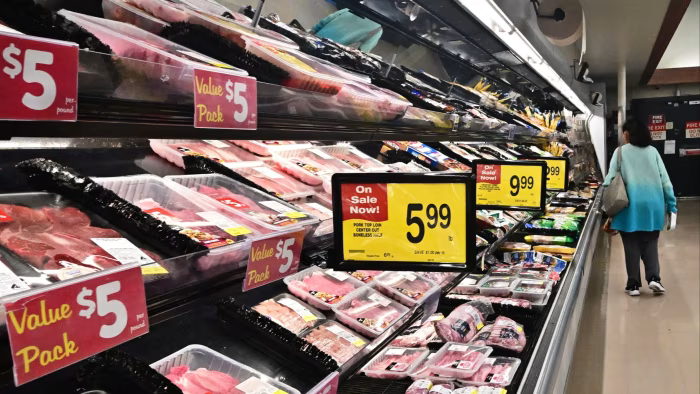
The Federal Reserve will lower interest rates just once this year, according to a new poll of academic economists, as lingering inflation forces the US central bank to adjust its schedule to cut borrowing costs.
More than half of the 39 academics that took part in the FT-Chicago Booth poll said that the Fed would only make one quarter-point cut this year. Almost a quarter forecast no cuts at all.
The results of the survey, conducted in the final week of May, come ahead of the Fed’s meeting on Wednesday, when rate setters are expected to shift their own predictions for cuts this year from three to two, or fewer.
Expectations that rates will remain higher for longer follow months of stickier-than-expected inflation. The US Bureau of Labor Statistics will publish its consumer price index data for May on Wednesday, just hours before the Fed’s rate announcement.
Borrowing costs remaining high through November’s US election would be a blow to President Joe Biden, who is battling low approval ratings on his handling of the economy amid voter anxiety over the cost of mortgages, food, and other goods.
Economists in the poll also upped their forecasts for the personal consumption expenditures price index — another gauge of price inflation — from 2.5 per cent in the March poll to 2.8 per cent now. The Fed targets PCE of 2 per cent. Headline PCE was 2.7 per cent in April, the Bureau of Economic Analysis said in late May.
Karen Dynan, a professor at Harvard University and poll respondent, said recent data had raised “worries about whether higher-than-target inflation is becoming embedded”.
Fed officials believe the continued strength of the jobs market gives them leeway to keep rates at a 23-year high of 5.25-5.5 per cent, unlike central banks in the Eurozone and Canada, which both cut rates last week.
Economists’ expectations of a soft landing for the US economy have also risen. The poll shows 52 per cent of respondents did not see recession until 2026 or beyond, up from 46 per cent in March.
A third of poll respondents — the biggest group — think the Fed will make its first cut this year in September, at the central bank’s last meeting before the November 5 election.
Julie Smith, a professor at Lafayette College, said a September move was likely “and maybe another one later in the year after the US election”.
But she said Fed rate changes in the autumn would be “very tricky” because of “how it interplays with US politics and the presidential election”.
While the central bank is almost certain to leave rates unchanged this week, Fed-watchers expect the Federal Open Market Committee’s so-called “dot plot” to show a reduction in the number of cuts policymakers see this year.
Claudia Sahm, a former Fed staffer who is now chief economist at investment manager New Century Advisors, said a disappointing CPI figure for May could lead officials to switch from three to one.
“The Fed doesn’t like to be abrupt unless they have to be,” said Sahm, who was not polled. “[But] they want to show that they’re responsive to data.”
The FT-Chicago Booth poll, conducted by the university’s Kent A Clark Center for Global Markets, also highlighted economists’ concerns about the US’s ballooning fiscal debt.
The Congressional Budget Office, an official US spending watchdog, said in May that the federal debt was set to reach 166 per cent of GDP by 2054.
More than half of the poll’s respondents said CBO’s debt estimate was credible, while more than a quarter said it was too low.
“There’s a risk given the possibility of geopolitical events and the need to respond to climate change, that we’re going to see even further upward pressure,” said Dynan.


